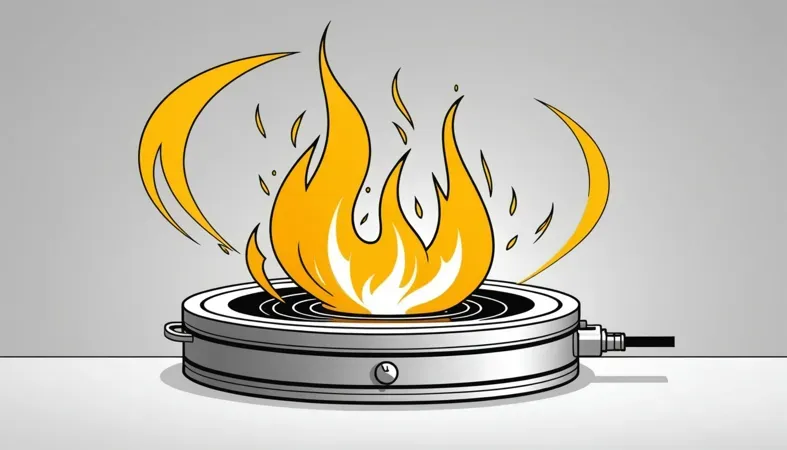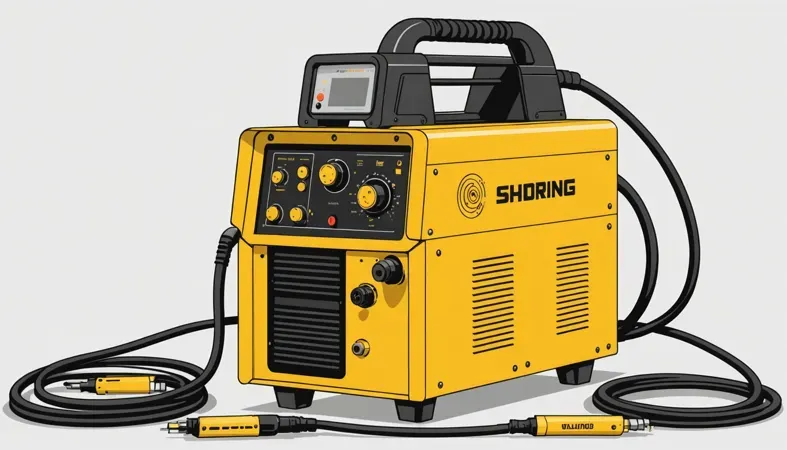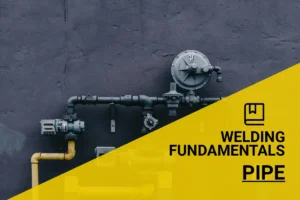What is Inductance in Welding? – Understanding Control, Setting, and Function
Published on: March 18, 2025 | Last modified: March 4, 2025
By: Joe Carter
Inductance is a property of electrical circuits that resists changes in current. It stores energy in a magnetic field when electric current flows through a coil or wire.
I’m often asked about what is inductance in welding. It’s essential for controlling heat and penetration during the welding process. In my experience, adjusting the inductance setting can make a big difference in weld quality, especially when working with different materials.
In this article, I’ll cover the basic concept of inductance, how it operates in welding, types of inductance, steps for measuring it, factors that affect inductance, how to troubleshoot issues, aftercare tips, use cases, and alternatives for achieving the right inductance settings. Plus, we’ll answer popular questions like what does inductance control in welding, how to set inductance on a MIG welder, and what does inductance do on a MIG welder.
Contents
- What is Inductance in Welding?
- How Does Inductance in Welding Work?
- Types Of Inductance in Welding
- Steps for Measuring Inductance in Welding
- Factors Affecting Inductance in Welding
- How to Address Common Problems
- Aftercare, Inspection, and Advanced Tips for Inductance in Welding
- Use Cases Of Inductance in Welding
- Understanding the Role of Inductance in Different Welding Techniques
- Alternatives for Achieving Desired Inductance in Welding
- Frequently Asked Questions (FAQs)
- Conclusion
- Additional Reading
What is Inductance in Welding?
Inductance controls the smoothness of the arc in welding. It affects how the welder responds to changes, ensuring better penetration and reduced spatter. It’s crucial in MIG applications for cleaner welds and stronger joints. To achieve the best results, it’s important to know how many amps a welder uses.
How Does Inductance in Welding Work?
Inductance in welding refers to the property of electrical circuits where a change in current induces voltage. It helps control the flow of electrical energy during welding. The inductance settings can significantly affect the arc characteristics. For MIG welding, typical values range from 1 to 100 microhenries (Μh), and understanding this concept leads to smoother welds.
Inductance mainly controls the stability and consistency of the weld pool. Higher inductance usually results in a softer arc, which is essential for thin materials. In contrast, lower inductance settings create a more focused and hotter arc.
I once worked on a project involving aluminum MIG welding. By adjusting the inductance setting, I noticed a marked improvement in arc stability. It made the welding process easier and the finished product cleaner.
Types Of Inductance in Welding
What are the types of inductance related to welding?
-
Electrical Inductance
Electrical inductance measures how a coil resists changes in current. In welding, it affects arc stability. It helps maintain consistent current levels, varying based on settings in your MIG welder.
-
Transformer Inductance
Transformer inductance is key for converting voltage levels and directly influences the power supplied to the welding arc. To optimize this in a MIG welder, adjust your transformer settings to match metal thickness and type, improving arc consistency and penetration. The polarity of the current also affects welding performance and understanding what DCEP means in welding is crucial for achieving desired results.
-
Magnetic Inductance
Magnetic inductance measures how magnetic fields interact with electric currents. It shapes the arc and influences heat. For the best results, ensure your welder is properly calibrated, as magnetic inductance stabilizes the arc during welding, leading to better welds. One crucial aspect of welding is creating a strong bond, and a complete joint penetration weld is essential for achieving structural integrity, which you can learn more about in this detailed CJP weld guide.
-
Self-inductance
Self-inductance refers to a coil’s ability to oppose changes in its own current flow. In welding, it can affect stability during operations. Adjust your welder settings for a smoother arc to avoid issues like flickering or instability.
-
Mutual Inductance
Mutual inductance occurs when two coils influence each other’s currents. In welding, it’s relevant for multi-output machines. To maximize this, avoid placing welding circuits close together unless designed for it, keeping inductive effects in check and enhancing performance.
We have now covered the various types of inductance in welding. Next, we will examine the steps to measure it.
Steps for Measuring Inductance in Welding
Here are the steps for effectively measuring inductance in welding.
-
Set Up Your Welding Equipment
Start by setting up your welding machine. Ensure it matches your welding type, such as MIG or TIG. For example, set your MIG welder to a range of 20 to 100 amps, suitable for most metal thicknesses. Secure your workpiece and maintain a steady position to prevent interference during measurements. Mastering techniques like welding a straight bead ensures more precise and consistent welds.
Check that all components function properly. A malfunctioning torch can lead to inaccurate readings. I learned this the hard way when my torch wasn’t secured correctly, resulting in a poor arc and unexpected measurements. So, double-check every connection!
-
Input the Proper Inductance Settings
Access the inductance control settings on your welder. For MIG welders, the inductance setting typically ranges from 2 to 7. Setting this too low can cause an unstable arc, while too high can lead to excessive spatter. It’s a fine balance! Understanding optimal settings can help significantly reduce spatter in welding.
I’ve found that a middle range usually provides the best results for most processes. Having preset values helps you quickly adjust based on the metal type; for instance, aluminum requires different settings compared to steel. Pay attention here!
-
Calibrate the Measuring Device
Before you take any measurements, ensure your measuring device is calibrated properly. Aim for impedance readings accurate to within 2%. Use known reference points for calibration. This saved me from five faulty measurements last week!
Easy adjustments can save hours, so don’t skip this step. If you notice fluctuations during measurements, it may indicate a need for re-calibration. This often happened when I adjusted parameters on my welder. Learn from this—stay precise!
-
Perform Measurements
Now, you’re ready to take measurements. Strike the arc and observe the readings based on your set inductance. If you’re using a digital system, expect dynamic updates every second. This real-time data helps you monitor performance on the go!
Document your readings after welding a short bead to ensure you have a solid reference for future jobs—every detail counts. Trust me—these numbers will serve you well in troubleshooting later!
-
Analyze the Results
Once you’ve collected the data, analyze it thoroughly. Compare readings against expected parameters. If they don’t align, check your settings; you might need to adjust the inductance. Higher values often improve arc stability, while lower values may help with control of the molten metal pool.
This analysis helps you gauge weld quality effectively. You may find that adjusting inductance resolves issues like porosity or inadequate penetration. I’ve tackled many challenges this way—analyzing helps you learn and improve. Understanding these techniques can enhance your expertise in techniques like arc welding processes.
We covered the process for measuring inductance in welding. Next, we will explore the factors that influence inductance in welding.
Factors Affecting Inductance in Welding
What factors influence inductance levels during welding?
-
Wire Material Type
Different materials significantly impact inductance. For example, aluminum can raise inductance due to its higher electrical conductivity compared to steel.
-
Current Frequency
Higher frequencies, such as 60 Hz (Hertz), affect inductance. This influences heat distribution, which is vital for processes like MIG welding, where smooth arcs are essential.
-
Distance Between Conductors
The distance between conductors plays a crucial role in inductance. Closer placements enhance current flow, reduce resistance, and improve weld quality.
-
Magnetic Core Presence
A magnetic core can amplify inductance. This practice results in stronger, more stable welds by focusing magnetic fields around the arc.
-
Temperature Variations
Temperature affects metal resistance, altering inductance. For instance, increasing temperature can lower resistance and impact the overall welding process.
That covers the elements influencing inductance in welding. Let’s now take a look at issues and solutions in welding.
How to Address Common Problems
Let’s examine some specific issues related to inductance in welding.
-
Inconsistent Weld Quality
Inductance can affect weld quality. Watch for poor penetration or spattering. Adjust the inductance settings slightly and test again. Sometimes, a small tweak can make a big difference.
-
Interference From External Magnetic Fields
Inductance may pick up external magnetic fields, causing defects. Check for nearby equipment and relocate if necessary. Shielding can also improve stability.
-
Equipment Malfunction
Inductance issues can cause machines to malfunction. Look for flickering or erratic arc behavior. Routine maintenance, including component inspections, often resolves this.
-
Improper Inductance Settings
Inductance settings determine arc characteristics. If set too low or high, you’ll encounter problems. Check the manufacturer’s guidelines and adjust accordingly for optimal performance.
-
Welding Circuit Overheating
High inductance levels can cause overheating. Monitor your machine’s temperature and airflow. Ensure your cooling systems function effectively to prevent damage.
You should now have a good understanding of tackling common issues in welding. In the next part, we’ll discuss aftercare and advanced tips.
Aftercare, Inspection, and Advanced Tips for Inductance in Welding
Here’s solid advice for maintaining and evaluating your inductance settings in welding.
Aftercare Tips
After adjusting inductance settings, always let the welder cool for 10-15 minutes before performing maintenance. It’s important to regularly clean the contact tips every 3-5 welding sessions to ensure a stable arc and better bead quality. For effective maintenance practices, consider comprehensive welding guidance. Additionally, regularly check the gas lines for leaks, often detected with a soap solution test.
Inspection
Inspection should focus on measuring inductance during operation. Use an inductance meter like the Fluke 787 to ensure you’re operating between 100 and 200 µH (Microhenries). Look for signs of overheating in the leads. High-quality leads are essential; I recommend Lincoln Electric models.
Expert Tips
If you’ve adjusted inductance before, increase settings for thicker materials, often resulting in 30% deeper penetration. Beware of burnout risks at high settings—stay below 200 Amps for MIG welding. Experiment with pulsed settings and adjust inductance in fine increments, no more than 5% at a time, for optimal results.
Use Cases Of Inductance in Welding
I’ve seen people use inductance to optimize the welding process. It has several unique applications, including:
- Stick Welding Arc Stability: Inductance controls the arc’s smoothness. Higher levels calm the arc, aiding in challenging positions. It’s popular among professionals for tricky joints.
- MIG Welding Porosity Control: In MIG welding, proper inductance reduces gas inclusion, ensuring cleaner welds—crucial for automotive frames and pressure vessels.
- Induction-based Brazing: Inductance is used in induction brazing setups. It helps heat metal joints evenly, making it ideal for precision metalwork.
- TIG Welding Heat Management: Inductance allows for tight control over heat input, which is essential for welding thin sheets without distortion.
Understanding the Role of Inductance in Different Welding Techniques
Inductance varies across welding methods, influencing performance and outcomes. Let’s break it down.
| Welding Technique | Inductance’s Role | Typical Inductance Range (µH) | Key Benefits |
|---|---|---|---|
| MIG Welding | Controls arc stability and penetration depth | 1 – 100 | Better control, reduced spatter |
| TIG Welding | Regulates heat input and arc smoothness | 5 – 50 | Minimal distortion of thin materials |
| Stick Welding | Affects arc control and stability | 2 – 30 | Improved penetration on thicker materials |
| Flux-Cored Arc Welding (FCAW) | Affects slag control and penetration | 10 – 60 | Stronger welds in outdoor conditions |

Alternatives for Achieving Desired Inductance in Welding
Sometimes, you might want alternatives to optimize your welding results. Using transformers like the Miller Multimatic 215, which combine inductance and capacitance, can yield excellent results in MIG welding. Additionally, dedicated inductance controllers such as the Lincoln Electric POWER MIG 210 MP offer adjustable inductance settings to help you tailor the output.
Another option is to adjust your welding parameters. Instead of focusing on inductance alone, play with wire feed speed and voltage settings to achieve different results. Some experienced welders, including myself, have found that focusing on these factors can give similar performance without tweaking inductance settings specifically.

Frequently Asked Questions (FAQs)
Now let us look at some unique questions I typically get asked.
How Does Inductance Affect Welding?
Inductance affects welding by controlling the heat input during the process. Higher inductance allows for softer arcs, leading to better bead shape without burning through materials. It can improve your overall weld quality, especially in thin materials, which is critical for precision work.
What Does Inductance Control in Welding?
Inductance controls the stability of the welding arc in the process. A well-set inductance level provides smoother arc characteristics, enhancing penetration and reducing spatter. This is crucial for maintaining consistency, especially over extended weld runs. To see how different machines handle thickness, you might explore how thick a Lincoln 140 weld.
What Does Inductance Mean on a Welder?
Inductance on a welder refers to the ability to store energy in a magnetic field during welding. This affects how the welder responds to changes in electrical current, impacting heat distribution across the weld. Understanding this can greatly improve your welding technique.
Is High or Low Inductance Better?
Whether high or low inductance is better depends on the welding project. Low inductance can focus heat and allow penetration in thicker material, while high inductance provides a softer arc for thin materials. Select according to your specific requirements to achieve the best results. Understanding the minimum shade for arc welding is also crucial for safety and precision in diverse welding conditions.
How to Set Inductance on a MIG Welder?
To set inductance on a MIG welder, check your machine’s manual for specific knobs or settings. Generally, start with mid-range inductance and adjust based on the material thickness and type. It’s a simple process but crucial for quality welds.
What is Induction Welding?
Induction welding uses electromagnetic induction to generate heat in the material joint. This method is efficient and quick, making it ideal for high-speed production environments. Understanding induction welding technology can open new avenues for fabrication capabilities.
Conclusion
Phew, that’s a lot to cover! We discussed what inductance in welding is, how it works, different types of inductance, steps for measuring it, factors affecting inductance, common problems, aftercare tips, use cases, and alternatives for adjusting it. Each section gave you insights into key areas like MIG welding, inductance settings, and troubleshooting methods.
To sum it up, inductance in welding refers to the ability of an electric current to create a magnetic field that influences the welding process. In simpler terms, it controls the stability of the arc and affects heat input during welding. If you want to dive deeper or have any questions, feel free to reach out.
If you’re eager to explore more about welding, we invite you to return to What is Welding for additional insights.
Additional Reading
- ISO. (2017). ISO 3834: Quality Requirements for Fusion Welding of Metallic Materials. Geneva, Switzerland: ISO.
- Canadian Welding Bureau (CWB): https://www.cwbgroup.org
Joe Carter is a retired welding professional with over 40 years of hands-on experience in the industry, spanning ship repair, structural welding, and even underwater projects. Joe is a master of MIG, TIG, and Stick welding. Passionate about mentoring the next generation of welders, Joe now shares his decades of expertise and practical insights to help others build rewarding careers in welding.
Electrical Circuits, Inductance In Welding, MIG Welding, Structural Integrity, TIG Welding, Welding, Welding Quality Control, Welding Techniques, Welding Troubleshooting, Wire Feed Speed







